Negative Space Art: A Powerful Tool for Depth and Design
The world of art and design isn’t just about what you see, but also about the space in between. Negative space art, a technique that focuses on the empty areas surrounding and within the subject, creates a captivating interplay between form and absence. This article delves into the world of negative space art, exploring its history, impact, and practical application in design.
- What is Negative Space Art?
- The History of Negative Space Art
- Why does Negative Space Art Matter?
- Notable Example of Negative Space in Art Design
- Hidden Gems of Negative Space
- Beyond Design: Negative Space in Other Art Forms
- Techniques and Strategies for Using Negative Space Art
- How to Create Negative Space Art
- Negative Space Art in Different Mediums
- Conclusion
- Embrace the Absence: Experiment and Create!
What is Negative Space Art?
Negative space art centers around using empty space as a key element in the composition. Unlike positive space, which refers to the main subject of an artwork, negative art becomes a design element itself. Imagine a white vase on a black canvas – the black area surrounding the vase is the negative space. However, this emptiness isn’t passive. In negative space art, the shapes formed by the empty areas play a crucial role, sometimes even forming a secondary image. A classic example is Rubin’s Vase, where the white space in the center creates the illusion of two faces staring at each other.
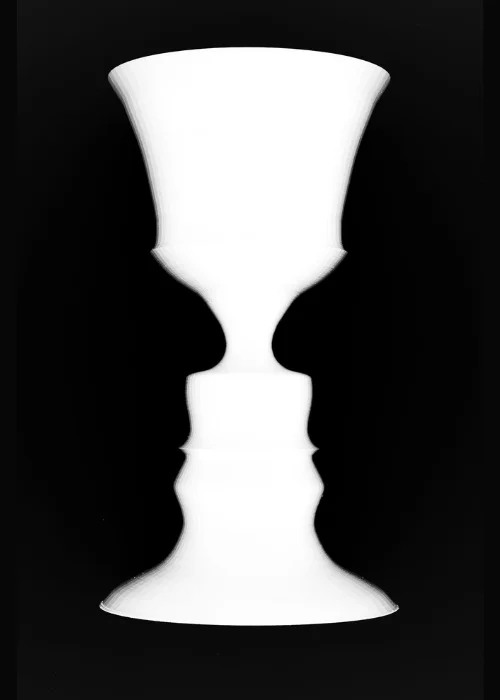
Check out The Empowering Illustrations of Artist John Mattos
The History of Negative Space Art
Negative space art has roots that stretch far back in art history. Negative space in painting during early age cave paintings, with their figures outlined against the rock face, demonstrates an awareness of negative space. However, it wasn’t until the 20th century that artists truly began to explore its potential. The rise of movements like Gestalt psychology and minimalism emphasized simplicity, form, and perception, making negative space a natural fit. M.C. Escher, the Dutch graphic artist, became a master of using negative space to create mind-bending illusions, as seen in his famous lithograph “Relativity”.
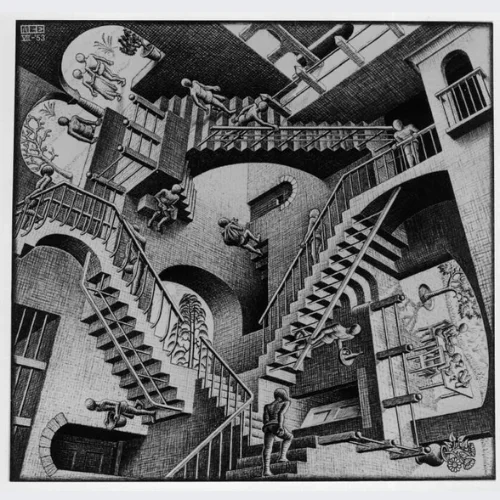
Why does Negative Space Art Matter?
Negative space art isn’t just a visual trick; it offers a multitude of benefits for designers and artists. It fosters a sense of clean, minimalist beauty, making a composition feel balanced and sophisticated. By strategically using negative art, artists can guide the viewer’s eye, directing attention to specific elements and creating a sense of mystery and intrigue. Furthermore, negative space art’s versatility allows it to be adapted to various styles and messages, making it a valuable tool across diverse art and design disciplines.
Check out: Best Deepfake Apps – Top 5 For The Most Realistic Results
Notable Example of Negative Space in Art Design
Negative space design shines in various design disciplines. Here are some standout examples that showcase its versatility and effectiveness:
FedEx Logo
This iconic FedEx logo is a masterclass in using negative space design to convey a message. The arrow cleverly formed by the negative space between the “E” and “x” symbolizes speed and direction, perfectly aligning with the FedEx brand.

Check out how YouTube Changed Its Logo and App Design
Panda Express Logo
This playful logo uses negative space to create a hidden image within the design itself. Look closely, and you’ll see a friendly panda bear formed by the negative space between the black shapes.

Check out Top 18 Logos with Hidden Meaning
Toblerone Logo
The Toblerone logo cleverly incorporates the iconic Matterhorn Mountain peak using negative space between the triangular sections, referencing the brand’s Swiss heritage.
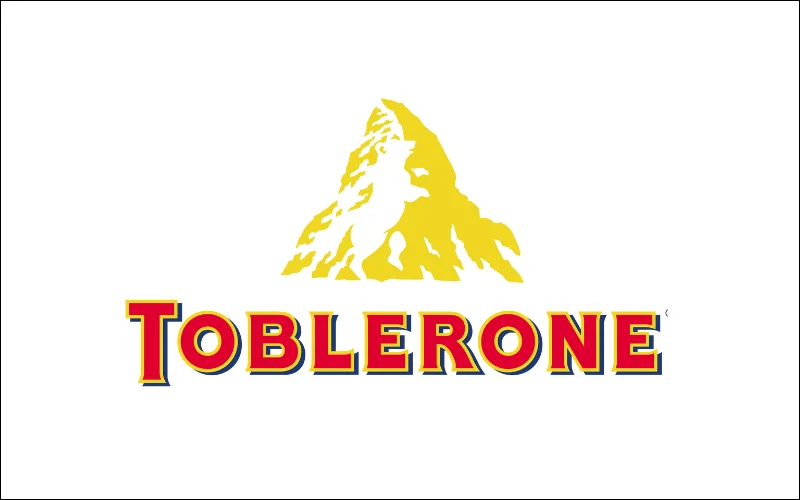
Find out Famous Logos With Hidden Meanings
Hidden Gems of Negative Space
Negative space art can go beyond simply creating a sense of balance or simplicity. Some designers use it to embed clever hidden messages or imagery within a logo or design. This adds a layer of surprise and intrigue, encouraging viewers to take a closer look and discover the secret image.
One prime example of this technique is the Tour de France logo. This iconic logo for the cycling race isn’t just a bold typeface. Look closely at the letters “O” and “U” in “Tour,” and you’ll see the silhouette of a cyclist cleverly formed by the negative space. This simple yet effective design instantly communicates the essence of the event without needing additional imagery.
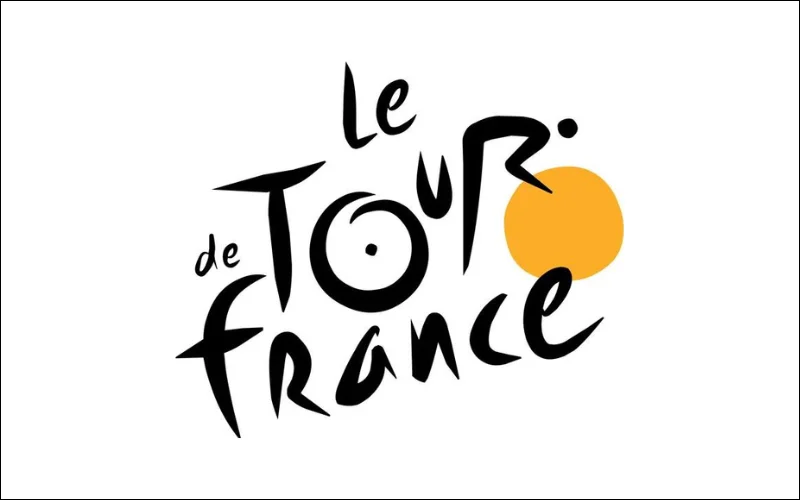
Another hidden gem of negative art can be found in the logo of the World Wildlife Fund (WWF). The panda bear logo is instantly recognizable but take a closer look at the space between the bear’s black fur and the white background. You’ll see the negative space cleverly forms a globe, subtly referencing the WWF’s mission of global conservation efforts.

Kölner Zoo Logo
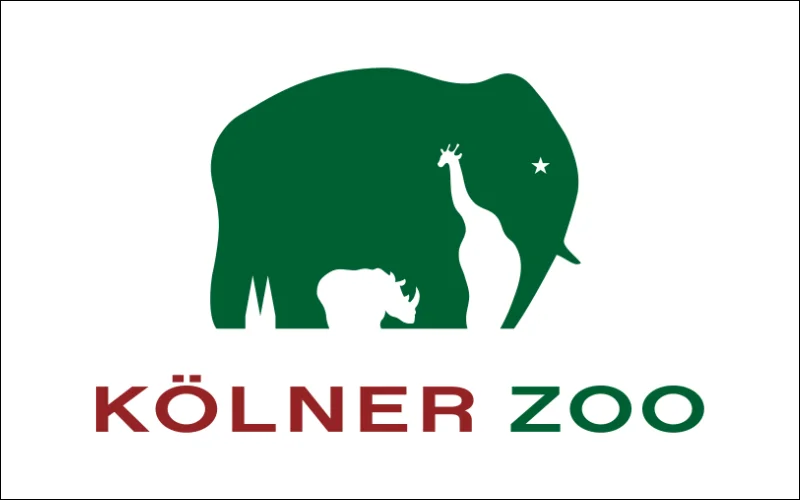
The Guild Of Food Writers
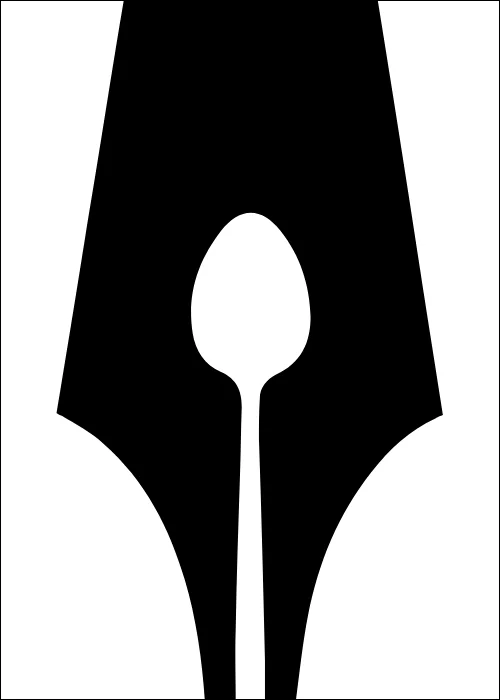
Apple Logo

Beyond Design: Negative Space in Other Art Forms
Negative space isn’t just a designer’s playground; it’s a powerful tool used across various artistic disciplines. Here’s how negative space breathes life into different art forms:
Printmaking
We’ve already explored M.C. Escher’s mind-bending lithographs as prime examples of negative space creating optical illusions. But printmaking offers a wider range of applications. Artists can use negative space to create a sense of depth and contrast in their work. For instance, a woodcut print with bold black shapes might utilize the negative space to suggest a vast landscape or a serene sky.
Check out 10 Most Famous Graphic Designers & Their Iconic Designs
Photography
Photography relies heavily on composition, and negative space plays a crucial role in creating a compelling image. Photographers use negative space to:
- Isolate a subject: By surrounding the subject with ample negative space, the photographer draws the viewer’s eye directly to the focal point.
- Emphasize scale: A lone figure silhouetted against a vast empty sky can evoke a sense of awe and isolation, highlighting the scale of the environment.
- Lead the eye: Negative space can be used to create a sense of movement or guide the viewer’s eye through the photograph.
Sculpture
While sculptures are three-dimensional objects, negative space is just as important as the form itself. Take Alexander Calder’s mobiles – the empty space between the hanging shapes becomes an active participant in the artwork. As viewers move around the sculpture, the interplay between positive and negative space creates a dynamic and ever-changing experience.
Architecture
In architecture, negative space refers to the open areas within a building or complex. Think about courtyards, plazas, or even the space between buildings. These negative spaces serve multiple purposes:
- Balance and flow: Negative space can create a sense of balance and flow within the overall structure, preventing a feeling of claustrophobia.
- Functionality: Courtyards can provide natural light and ventilation, while plazas can serve as social gathering spaces.
- Aesthetics: Negative space can be used to create a sense of serenity and grandeur, as seen in minimalist architectural styles
Techniques and Strategies for Using Negative Space Art
So, how do you incorporate negative space into your own creations? Here are some tips:
- Train Your Eye: Start by actively observing negative space in everyday objects. Look for the shapes formed by the empty areas and how they interact with the subject.
- Sketch it Out: Before diving into digital tools, use pen and paper to experiment with simple shapes. See how negative space can create new forms and add depth to your composition.
- Embrace Minimalism: Negative space thrives on simplicity. Avoid overloading your design with too many elements, allowing empty areas to breathe.
- Play with Layers: Overlap shapes to create a sense of intrigue. Let the negative space between the layers become an integral part of the story you’re trying to tell.
- Test it Out Digitally: Once you have a basic idea, use design software to explore different shapes, colors, and compositions.
How to Create Negative Space Art
Ready to create your own negative space art? Here’s a step-by-step guide:
- Choose Your Theme: Decide what you want to represent with your artwork.
- Sketch and Experiment: Start with basic shapes and explore how negative space can define your subject or create a secondary image.
- Refine and Digitize: Once you have a solid concept, refine your sketch and transfer it to a digital format for further manipulation.
- Play with Balance: Experiment with the balance between positive and negative space to achieve the desired visual impact. Don’t be afraid to adjust shapes and sizes.
- Consider Color: Color plays a role in negative space too. Experiment with color combinations to enhance the visual appeal of your artwork.
Negative Space Art in Different Mediums
Negative space design isn’t limited to graphic design. It’s a technique used across various art forms:
- Printmaking: Artists like Escher used negative space to create mind-bending optical illusions in his lithographs.
- Photography: Photographers use negative space to create a sense of isolation or emphasize the scale of a subject. A vast landscape with a lone tree silhouetted against the sky is a classic example.
- Sculpture: Alexander Calder’s mobiles are a prime example of negative space in sculpture. The empty space between the hanging metal shapes becomes just as important as the shapes themselves, creating a dynamic and interactive experience for the viewer.
Conclusion
Negative space art is a powerful tool that can elevate your designs and artworks. By understanding its potential and employing the techniques discussed here, you can create visually compelling pieces that engage the viewer and leave a lasting impression. So, next time you’re designing a logo, crafting an illustration, or simply observing the world around you, take a moment to appreciate the beauty and power of negative art.
Embrace the Absence: Experiment and Create!
This article has hopefully equipped you with the knowledge and inspiration to explore the world of negative space art. There’s a whole universe of creative possibilities waiting to be discovered. So, grab your tools, experiment with shapes and compositions, and see where the absence of form can take you!
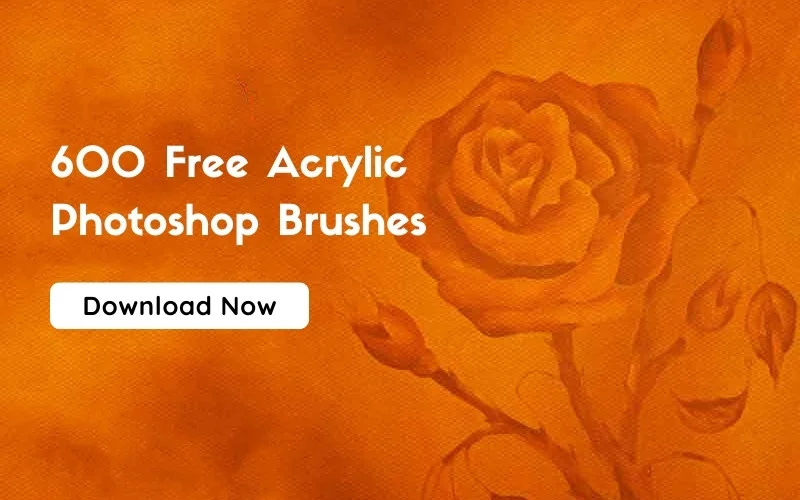
Motion Graphics Agency exemplifies the transformative power of motion graphics as a tool for depth and design. With their unparalleled creativity and expertise, they breathe life into ideas, turning them into visually stunning and engaging experiences. Their mastery of design principles coupled with their innovative approach sets them apart, making them a driving force in the industry. A testament to the immense potential of motion graphics in shaping the future of visual communication.
The interplay between positive and negative space not only enhances the visual impact but also engages viewers in a dynamic way, encouraging them to explore different perspectives and meanings.
egative space art is more than just an aesthetic technique—it’s a profound strategy that transforms how we perceive design and art itself. By leveraging the areas around and within the main subject, artists create a dynamic interplay that enhances depth and visual intrigue. From iconic logos like FedEx’s arrow to intricate sculptures and minimalist photography, negative space not only balances compositions but also guides viewer attention and adds layers of meaning. Embracing negative space opens doors to endless creative possibilities across various artistic disciplines, making it a timeless and impactful tool in the art of visual communication.
I cannot explain how grateful I am for your thoughtfulness and care. I appreciate that you are, as always, my first pick for inspiration.
This is a fascinating exploration of negative space art! The way you describe the interplay between positive and negative space highlights its importance in composition.
I want to convey to you a message: in your leisure time, have fun and engage in activities you enjoy. Foodle is one such activity.